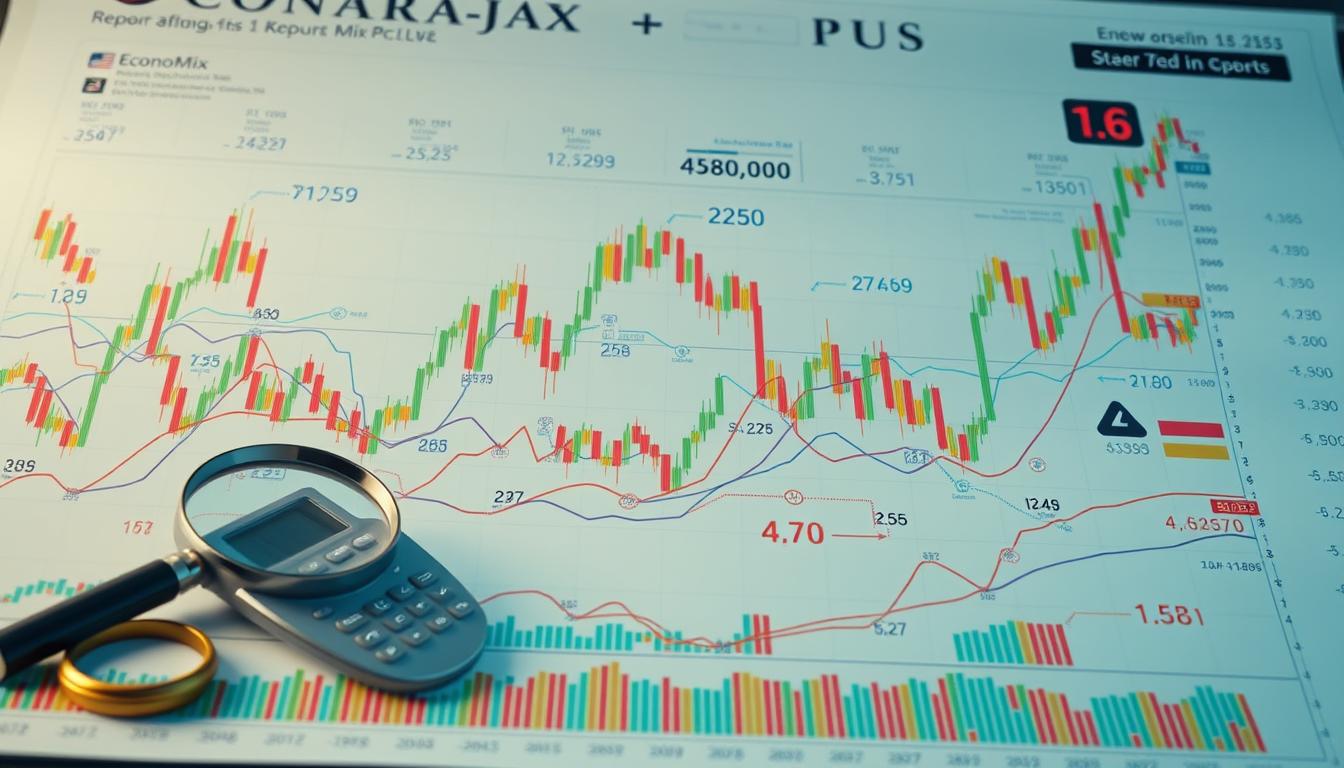The S&P 500 has soared 25% since 2021, fueled by AI hype and crypto rallies – but nearly 40% of tech stocks now trade at valuations unseen since the dot-com crash. Markets thrive on momentum, yet overheated valuations often mask hidden risks.
Recent enthusiasm reminds experts of past cycles where emotion overpowered logic in the stock market. When prices detach from fundamentals – like earnings or revenue growth – even blue-chip stocks can become speculative gambles, creating a bubble. Remember: every share represents partial ownership in a real business, not just a digital ticker, and this point is crucial for long-term investment success.
While innovations like artificial intelligence drive progress, they also attract speculative stocks with shaky foundations. This guide cuts through the noise, teaching you to spot unsustainable trends without relying on savings accounts or bonds. You’ll learn to separate growth opportunities from dangerous euphoria.
Key Takeaways
- The S&P 500’s 25% surge since 2021 mirrors pre-bubble historical patterns
- Media narratives and FOMO often inflate asset prices beyond reasonable levels
- Stocks equate to business ownership – unsustainable valuations threaten long-term returns
- Tech and crypto sectors show elevated risk signals despite innovation potential
- This article focuses solely on equities, excluding guaranteed-return instruments
Understanding Market Bubbles and Market Cycles
When investor excitement outpaces company earnings, markets enter dangerous territory. Nobel laureate Robert Shiller’s research reveals bubbles form when prices triple faster than revenue – think 1999 tech stocks trading at 100x earnings. These surges create temporary wealth but eventually collapse under their own weight.
Defining What Constitutes a Bubble
A bubble exists when asset prices disconnect from reality. Shiller’s CAPE ratio – comparing stock prices to 10-year earnings – shows the S&P 500 currently trades 30% above its historic average. “Markets can stay irrational longer than you can stay solvent,” he warns, highlighting how euphoria overrides logic.
Three red flags emerge:
- Prices rising 50%+ annually without profit growth
- Media declaring “new economic paradigms”
- Novice investors dominating trading activity
Differentiating Bubbles from Normal Cycles
Healthy markets correct through 10-20% pullbacks when earnings dip. Bubbles implode 50%+ as speculators flee. The 2000 dot-com crash erased $5 trillion because most tech companies had negative cash flow.
Today’s AI-driven rallies differ slightly – many leaders actually generate profits, attracting savvy investors in the S&P 500. This market bubble showcases how a couple of stocks can skew prices, emphasizing the importance of understanding the investment system.
Savvy investors compare price/sales ratios across sectors. Companies growing revenue 20% annually while maintaining reasonable valuations rarely cause portfolio disasters. Focus on businesses, not ticker symbols.
Recognizing Market and Psychological Warning Signs
Markets move in patterns shaped by numbers and nerves. While headlines scream about record highs, seasoned investors track metrics that reveal underlying stress. Russell Investments data shows current optimism sits at 68/100 – elevated but not yet euphoric.
Analyzing Price Trends and Volatility Metrics
Watch for stocks rising faster than their earnings growth. A company gaining 10% yearly revenue shouldn’t see 50% price jumps. Check the VIX index – when volatility spikes above 25, markets often face turbulence.
Compare price-to-sales ratios across sectors. Tech firms trading at 15x sales while industrials hover at 2x signal imbalance. Track three metrics:
- 90-day price changes vs. 5-year averages
- Earnings revisions by analysts
- Trading volume surges without news
Interpreting Investor Sentiment and Media Narratives
When financial channels start claiming “this time it’s different,” check the data. Surveys showing over 60% bullishness often precede downturns. In 2023, 72% of retail traders expected 20%+ returns – a red flag for unrealistic expectations.
Media amplifies trends but rarely questions them. Count how often articles use phrases like “must-buy” or “can’t miss.” Balance this noise with quarterly reports and CEO commentary. Sustainable investments grow through multiple cycles, not viral moments.
Your time matters most. Allocate it to studying cash flow statements, not chasing hype. Markets reward those who separate signals from screams.
How to Avoid Stock Market Bubbles?
Navigating turbulent markets requires a disciplined system that prioritizes fundamentals over frenzy. Financial advisors emphasize three core principles: rigorous valuation checks, diversification across stable sectors, and continuous performance reviews.

Practical Steps for Steering Clear of Overheated Markets
First, scrutinize valuations using metrics like price-to-earnings ratios in the stock market. Companies trading at 30x earnings without matching revenue growth often signal risk in the market bubble. Compare these figures to sector averages – if they’re 50% higher, proceed cautiously, as this could draw the attention of investors looking for stable prices.
Next, avoid assets swayed by short-term hype. Over 60% of recent tech IPOs underperformed benchmarks within 12 months, according to Morningstar data. Focus instead on businesses with consistent cash flow and manageable debt levels.
Implement these safeguards:
- Review quarterly reports for revenue diversification
- Limit exposure to sectors exceeding 20% of your portfolio
- Rebalance holdings when single investments grow disproportionately
Finally, establish automated alerts for volatility spikes or valuation thresholds. This system removes emotion from decisions, anchoring your strategy in data. “Sustainable returns come from patience, not panic,” notes Fidelity’s 2023 market outlook.
Diversifying Your Investment Portfolio in a Dynamic Market
Building wealth requires tuning out market noise while embracing time-tested investment strategies. Today’s rapid price swings in the S&P 500 demand portfolios anchored in quality assets rather than chasing fleeting trends that can lead to a market bubble. A balanced approach combines undervalued sectors with liquidity buffers to weather volatility in the stock market.

Embracing Quality Investments Over Short-Term Hot Stocks
- Focus on businesses with consistent earnings and manageable debt. For example, consumer staples companies often maintain stable cash flows during downturns – unlike speculative tech stocks in a market bubble. Investors should analyze these indicators to identify durable investment opportunities in the stock market:
- Price-to-earnings ratios below sector averages
- Dividend growth spanning 5+ years
- Revenue increases across economic cycles
Leveraging Unloved Assets and Strategic Cash Holdings
Markets today frequently overlook sectors like utilities or healthcare. These areas often trade at discounted valuations compared to high-flying tech peers. Maintain 10-15% cash reserves to capitalize on sudden crash opportunities without liquidating core positions.
| Asset Type | Current Valuation | 5-Year Return | Risk Level |
|---|---|---|---|
| Tech Stocks | 32x Earnings | +18% Annual | High |
| Consumer Staples | 18x Earnings | +9% Annual | Low |
| Utilities | 14x Earnings | +6% Annual | Medium |
| Cash Reserves | N/A | +0% Annual | None |
Rebalance quarterly using value indicators like price-to-book ratios. This discipline helps avoid overexposure to any single sector. Remember: diversification isn’t about eliminating risk – it’s about managing exposure to sustain returns through multiple market cycles.
Learning from Historical Trends and Expert Insights
History doesn’t repeat, but it often rhymes—a truth investors ignore at their peril. Markets swing between fear and greed, creating patterns visible through decades of data. By studying these cycles, you gain tools to navigate today’s enthusiasm-driven rallies.

Reviewing Past Bubbles and Their Aftermath
The dot-com crash offers a clear lesson about market bubbles. At its peak in 2000, the Nasdaq index traded at 175x earnings—triple today’s levels. Companies like Pets.com burned through cash while people chased “can’t lose” tech stocks in the stock market. When reality hit, $5 trillion vanished in 18 months.
Three critical patterns emerge from historical collapses:
- Valuations exceeding 30x earnings without profit growth
- Media narratives dismissing traditional metrics
- New investors flooding markets during peaks
Exploring Expert Opinions on Market Euphoria
Jeremy Grantham warns: “Every bubble begins with a kernel of truth and ends with a lot of fiction.” His analysis of speculative market bubbles shows euphoria typically lasts 20-30 months before collapsing. Current sectors like AI mirror this timeline.
Key indicators experts monitor:
- Price-to-sales ratios doubling sector averages
- Retail trading volume spikes in momentum stocks
- Declining short interest despite rising valuations
Applying Historical Data to Inform Your Decisions
Use past crashes as stress tests for your portfolio. If the S&P 500 index fell 40%—matching 2008’s drop—would your holdings recover? Analyze sectors that thrived post-crisis, like healthcare after 2000 or fintech post-2008.
Track these metrics to spot excessive enthusiasm:
- Margin debt levels relative to market cap
- IPO performance vs. established companies
- Earnings growth lagging price appreciation
Data-driven investors focus on sustainable returns, not temporary manias. As Grantham notes: “The market’s job is to fool as many people as possible, as often as possible.” Your job? See through the noise.
Conclusion
In today’s dynamic markets, balancing opportunity with caution defines successful investing. The S&P 500’s 25% surge since 2021 mirrors patterns that often precede corrections – a reminder that even robust indices face cycles ending in recalibration. Historical data shows technology sectors remain particularly vulnerable when valuations outpace earnings, as seen during the dot-com crash and recent AI-driven rallies.
Your strategy should prioritize fundamentals over frenzy. Diversify across sectors with stable cash flows and reasonable valuations, trimming exposure to assets trading at unsustainable multiples. Tools like Shiller’s CAPE ratio and Grantham’s bubble analysis underscore the importance of evidence-based decisions, not predictions.
Stay vigilant by monitoring metrics such as price-to-sales ratios and margin debt levels. Resources like this guide to identifying unsustainable trends help filter noise from actionable signals. Remember: markets reward discipline, not desperation.
As cycles evolve, continuous learning remains your strongest shield. Whether navigating the S&P 500’s swings or technology sector volatility, let historical lessons and quality assets anchor your portfolio. The journey doesn’t end with avoiding pitfalls – it thrives on enduring principles that outlast temporary manias.
FAQ
▶
▶
▶
▶
▶
▶
▶













